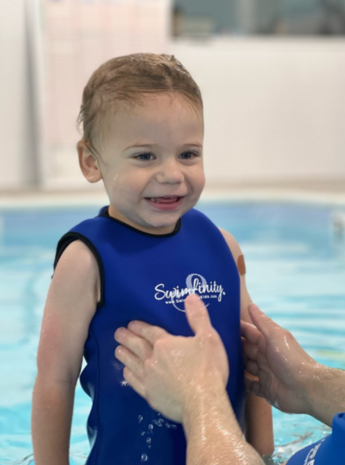- Federal health officials have shared that there’s little to no evidence that COVID-19 can spread among individuals in a pool setting.
- A new unpublished study out of Imperial College London suggests that chlorinated pools can neutralize virus particles in as little as 30 seconds.
- Regardless of the kind of pool you choose to swim in, it’s best to maintain social distance when possible; but wearing masks while swimming isn’t suggested.
This summer, scientists are better equipped to know how the COVID-19 pandemic affects our safety during seasonal activities, including taking a cool dip in a pool of your choice. Officials at the Centers for Disease Control and Prevention have always maintained that SARS-CoV-2 (the virus behind COVID-19 spread) is unlikely to spread in pools, releasing statements in May that suggested hot tubs and kid-friendly water playgrounds were also safe spots. “There is no evidence that SARS-CoV-2, the virus that causes COVID-19, can spread to people through water in these places,” the health agency’s website currently reads.
And now there’s more evidence that may help you understand why pools are less risky than your intuition may lead you to believe. In a lab setting, researchers out of Imperial College London in the U.K. mixed swimming pool water and an engineered amount of infectious SARS-CoV-2 virus, which scientists believe would largely be diluted (and not concentrated) in a swimming pool to begin with. Observing the results and sharing them in a preview of the upcoming study, researchers found that chlorinated pool water inactivated the virus in as little as 30 seconds in some cases.
The reason why pools are effective in inactivating free-floating SARS-CoV-2 particles is due to chlorine or bromine treatments used in water maintenance, explains Sudeb Dalai, M.D., Ph.D., an infectious disease physician within Stanford University’s School of Medicine. But even freshwater sources, like lakes or ponds, aren’t thought to be a source of concern for COVID-19 risk — the disease primarily spreads in these areas when people get into close proximity with each other, foregoing social distancing.

